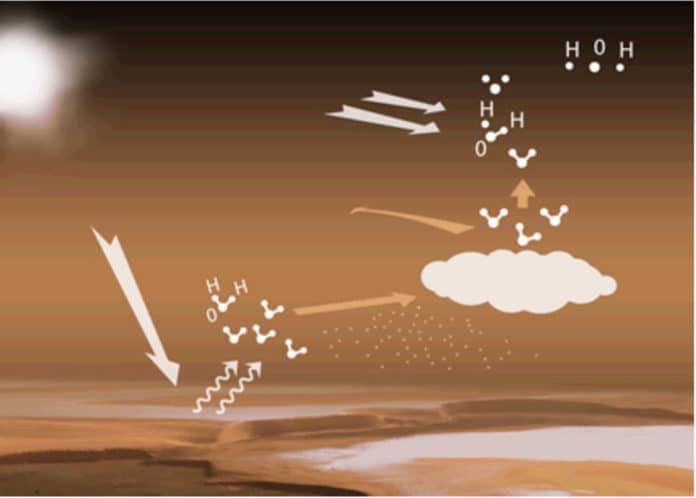Mars once harbored an active hydrological cycle, as demonstrated by geological features on its surface. But, it no longer holds the quantity of water required to produce such geological imprints.
The loss of water from Mars to space is thought to result from the transport of water to the upper atmosphere, where it is dissociated to hydrogen and escapes the planet. But a recent observation suggests that the sudden loss of water occurs in the upper atmosphere of Mars, boosting the hydrogen abundance.
In the upper atmosphere, the sunlight and chemistry disassociate water molecules into hydrogen and oxygen atoms that the weak gravity cannot prevent from escaping into space.
The study conducted by the CNRS scientist Franck Montmessin revealed that water vapor is accumulating in large quantities and unexpected proportions at an altitude of over 80 km in the Martian atmosphere.
Estimations indicated that large atmospheric pockets are even in a condition of supersaturation, with the atmosphere containing 10 to 100 times more water vapor than its temperature ought to hypothetically permit. With the observed supersaturation rates, the limit of water to escape would significantly increase during specific seasons.
These results, which were published in Science on 9 January 2020.
